From Manual to Smart: Pallet Inverters Transforming Germany's Material Handling
Are your warehouse operations a source of hidden costs and inefficiencies? Many factory owners I speak with focus on big production machinery but overlook the manual handling that happens between processes. You might have a state-of-the-art production line, but if your team is still manually transferring goods from one pallet to another, you have a bottleneck. This manual labor is slow, physically demanding, and a common source of product damage and workplace injuries. It quietly eats away at your profits every single day. The solution is to look at how the most efficient manufacturing economies in the world solve this problem. In places like Germany, the shift from manual labor to smart automation isn't a luxury; it's a core strategy for survival and growth, and the pallet inverter is a key player in this transformation.
Pallet inverters are transforming material handling in Germany by replacing slow, unsafe, and costly manual processes with fast, controlled, and automated solutions. They serve as a critical link in the "Industrie 4.0" ecosystem, not only by physically handling loads but also by integrating with factory management systems. This allows for seamless pallet swapping, load straightening, and damage recovery, which boosts operational efficiency, improves worker safety, and provides valuable data for smart factory logistics.
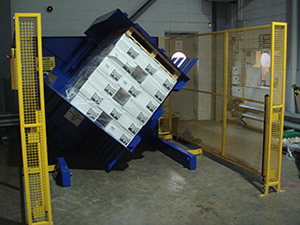
I have spent my entire career in the packing machine industry, first as an engineer and now as a factory owner myself. I've seen firsthand how small changes in logistics can have a huge impact on the bottom line. It’s not always about the biggest, most expensive machine. Sometimes, the most powerful investment is the one that solves a simple, recurring problem. The pallet inverter is a perfect example of this. It's a straightforward concept that delivers profound results. Let’s dive deeper into how this machine works and why it has become a standard in highly competitive markets like Germany. We will explore how it can directly impact your operational costs and fit into a larger digital transformation strategy.
How Do Pallet Inverters Directly Cut Operational Costs?
You watch your energy bills fluctuate and raw material prices climb. You know every dollar counts. But are you tracking the hidden costs buried in your material handling processes? Think about the team of workers whose only job is to move boxes from a wooden pallet to a plastic one for cleanroom access, or the cost of damaged goods when a heavy load shifts and crushes the products at the bottom. These expenses are real, they are consistent, and they are often accepted as "the cost of doing business." But they don't have to be. This continuous financial drain is a direct threat to your profitability, making it harder to compete and invest in growth.
A pallet inverter directly cuts operational costs by automating labor-intensive tasks, drastically reducing product damage, and minimizing the risk of workplace injuries. This translates into immediate savings on labor, fewer write-offs for damaged inventory, and potentially lower insurance premiums. It turns a variable, unpredictable cost center into a fixed, efficient, and predictable automated process.
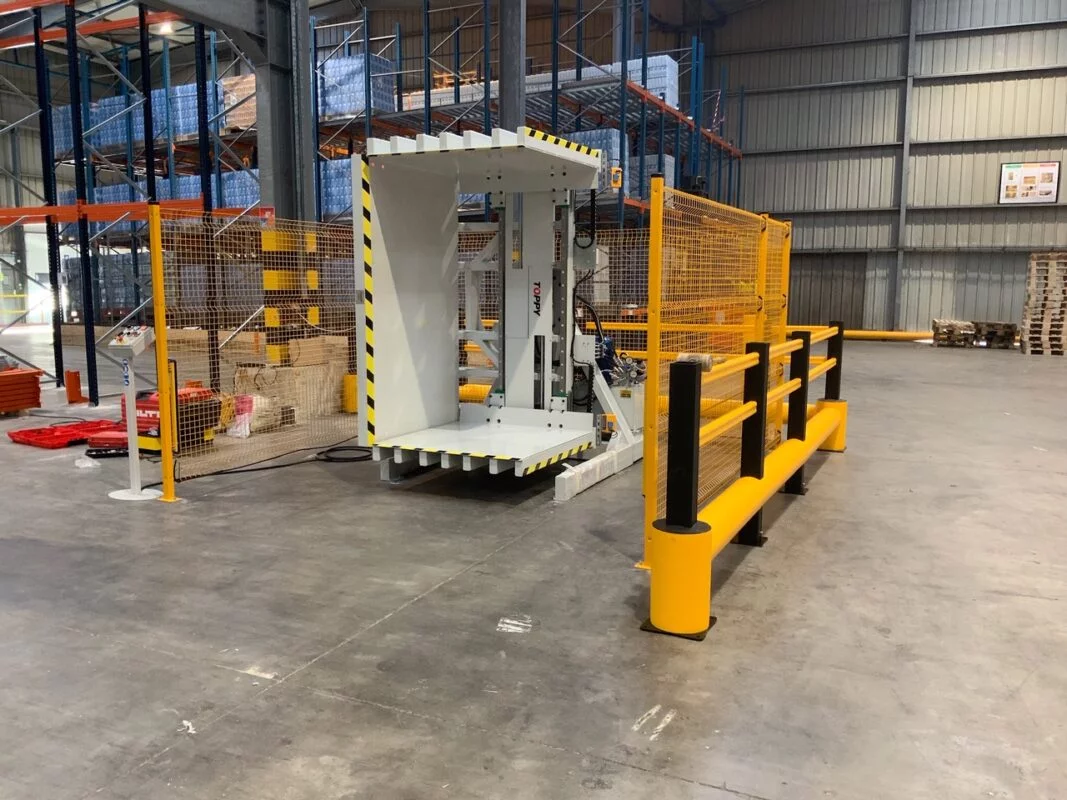
A Deeper Look at Cost Reduction
When I analyze an operation for a client, I look for areas where we can achieve the biggest impact with the smartest investment. Pallet handling is almost always on that list. For a CEO or owner like you, who has to look at the big picture, understanding the specific ways an inverter saves money is key to justifying the investment. It's not just about one benefit; it's about a cascade of savings across different parts of your operation.
The True Cost of Manual Labor
Manual handling is more expensive than just wages. You have to account for recruitment, training, benefits, and management overhead. More importantly, manual labor is not scalable. If you need to increase throughput, you need to hire more people, which increases all associated costs. An automated system like a pallet inverter has a fixed cost and can often handle increased capacity without additional investment.
I remember a client in the food and beverage industry. They had a team of four people working full-time just to switch from wooden warehouse pallets to sanitized plastic pallets before entering the production area. We calculated their fully-loaded cost for this team was over €150,000 per year. A pallet inverter that could be operated by a single forklift driver for a few hours a day eliminated that entire cost center. The machine paid for itself in less than a year.
The Financial Impact of Product and Pallet Damage
Every time a load is handled manually, there's a risk of damage. Boxes get dropped, bags tear, and containers get crushed. This is especially true for heavy or unstable loads. A pallet inverter clamps the load securely before rotating it. The process is smooth and controlled, virtually eliminating handling-related product damage. This not only saves the cost of the lost product but also the costs associated with disposal, rework, and customer complaints.
Furthermore, consider the pallets themselves. Many companies use high-quality pooled pallets like CHEP or PECO. If you ship out on these pallets, you risk losing them or paying expensive rental fees. A pallet inverter allows you to quickly and easily switch your products to a cheaper one-way shipping pallet, keeping your expensive assets in-house.
The Overlooked Cost of Workplace Safety
Back injuries are one of the most common and costly workplace incidents, often resulting from repetitive lifting and awkward movements. Manually unstacking and restacking a pallet is a prime example of such a high-risk task. A single serious injury can lead to significant costs in terms of medical expenses, insurance premium hikes, lost productivity, and potential legal fees. A pallet inverter removes this manual task entirely, creating a safer work environment. A safer factory is a more productive and profitable factory.
| Cost Factor | Manual Handling | With Pallet Inverter | Annual Savings Potential (Example) |
|---|---|---|---|
| Labor | 2-4 workers, full-time | 1 forklift operator, part-time | €70,000 - €150,000 |
| Product Damage | 1-3% of handled goods | <0.1% of handled goods | €20,000 - €50,000 |
| Workplace Injury | High Risk | Low Risk | €10,000 - €100,000+ |
| Pallet Costs | Risk of losing expensive pallets | Retain expensive pallets in-house | €5,000 - €15,000 |
As you can see, the savings are not theoretical. They are tangible, measurable, and they directly contribute to your goal of reducing overall operating costs.
Why is Germany a Benchmark for Smart Material Handling?
When you think of German manufacturing, what comes to mind? Precision, quality, and efficiency. But have you ever wondered how they achieve this legendary efficiency, especially in the "unsexy" parts of the factory like the warehouse? They don't just throw people at problems. They see every step in the production chain as an opportunity for optimization. If there's a repetitive, manual task that slows things down or creates risk, they engineer a solution to automate it. This philosophy, which they now call "Industrie 4.0," is what makes them a global benchmark. It's a mindset that a pragmatic leader can appreciate and learn from.
Germany is a benchmark for smart material handling because its "Industrie 4.0" approach treats equipment like pallet inverters as integrated components of a larger, connected system. They focus on total process optimization, not just isolated tasks. This means selecting machines built for reliability, data communication, and seamless integration with warehouse and manufacturing execution systems (WMS and MES), creating a truly smart and efficient logistics flow.
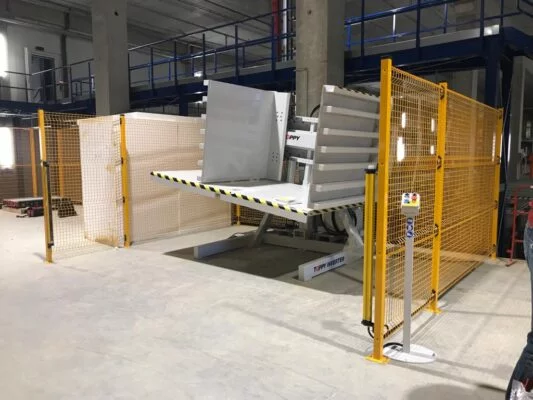
Diving Deeper into the German "Industrie 4.0" Approach
From my experience visiting German factories and working with German engineers, I've learned that their success isn't based on a single secret technology. It's about a deep-seated commitment to a set of principles. When applied to material handling, these principles transform a simple machine into a strategic asset. As someone who built a factory from the ground up, I have immense respect for this holistic view.
Principle 1: Total System Integration
In a typical factory, a pallet inverter might be a standalone island of automation. A forklift driver brings a pallet, uses the machine, and takes the new pallet away. The rest of the factory has no idea this event happened. In a German "Industrie 4.0" factory, that pallet inverter is connected. It communicates with the Warehouse Management System (WMS). The WMS might direct the forklift driver to take a specific incoming load to the inverter. As the inverter swaps the pallet, it sends a signal back to the WMS and the Manufacturing Execution System (MES), confirming the task is complete and the goods are now ready for the next stage. This creates a seamless, visible, and data-rich workflow. It eliminates manual data entry, reduces errors, and provides managers with a real-time view of material flow. This is fundamental to achieving the kind of production visualization you aim for.
Principle 2: A Focus on Reliability and Uptime (OEE)
German engineers are obsessed with Overall Equipment Effectiveness (OEE). They know that a machine that is constantly breaking down is worse than no machine at all. This is why they value robust construction, high-quality components, and designs that simplify maintenance. When they invest in a pallet inverter, they are not just buying a function; they are buying uptime. This aligns perfectly with your goal of achieving 95% effective run time. A well-built machine, like the ones we strive to build at SHJLPACK, is designed for the harsh realities of a 24/7 industrial environment. It's built from thicker steel, uses reliable hydraulic and electrical components, and includes features that make servicing easier.
Principle 3: Data as a Foundation for Improvement
The "smart" in smart manufacturing comes from data. A modern pallet inverter, built to German standards, is equipped with sensors. These sensors can track cycle times, monitor motor load, check hydraulic pressure, and count the number of operations. This data is gold.
- For Maintenance: It enables predictive maintenance. Instead of waiting for a hydraulic hose to burst and shut down a line, the system can alert you that the pressure is fluctuating, allowing you to schedule a replacement during planned downtime.
- For Operations: It helps you identify bottlenecks. If cycle times on the inverter are suddenly getting longer, it could indicate an issue with how pallets are being loaded or an operator needing more training.
This data-driven approach moves you from being reactive to being proactive, which is a core tenet of modern, efficient management.
| Feature | Traditional Approach | German "Industrie 4.0" Approach | Impact on Your Goals |
|---|---|---|---|
| Connectivity | Standalone Machine | Integrated with MES/WMS | Achieves production visualization |
| Data Collection | None or manual | Automated (sensors, cycle counts) | Enables predictive maintenance, boosts uptime |
| Build Quality | Built to a price point | Built for reliability and longevity | Reduces TCO, protects against aging equipment |
| Process View | Isolated task automation | Holistic workflow optimization | Increases overall capacity utilization |
Adopting this German mindset doesn't mean you need to be in Germany. It means choosing partners and equipment that share this philosophy of integration, reliability, and data-driven improvement.
How Does a Pallet Inverter Fit into a Digital Transformation Strategy?
"Digital transformation" is a big term. It can feel overwhelming, like you need to completely overhaul your factory with complex software and an army of IT consultants. As an engineer, I prefer to think about it in practical terms. How can we use technology to make better decisions and run a more efficient operation? You already have ambitious goals to deploy MES, IoT sensors, and data analytics. The challenge is connecting these digital systems to the physical reality on your factory floor. A machine that just moves things around might not seem like a high-tech part of this strategy, but it is absolutely essential.
A pallet inverter fits into a digital transformation strategy by acting as a critical bridge between your physical material flow and your digital management systems. It transforms a purely manual, invisible process into an automated, measurable, and controllable event. This provides the raw data your MES and analytics platforms need to visualize production, enable predictive maintenance, and optimize logistics in real-time.
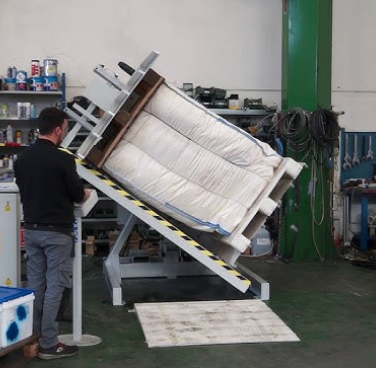
Diving Deeper: The Inverter as a Data-Generating Asset
Think of your factory as a body. Your MES platform is the brain. The IoT sensors are the nerves. But you need the nerves to be connected to the muscles that are actually doing the work. A smart pallet inverter is one of those muscles, and it comes with its own built-in set of nerves. Here is how it plays a central role in your digital goals.
From a Black Hole to a Data Point
Right now, when a worker manually swaps a pallet, that event is a black hole in your data stream. You don't know exactly when it happened, how long it took, or if there were any problems. Now, imagine an integrated pallet inverter.
- A pallet with a unique barcode arrives.
- A scanner reads the barcode and tells the MES, "Pallet XYZ is now at the inversion station."
- The inverter performs its cycle. It logs the start time and end time.
- It sends a confirmation to the MES: "Pallet XYZ successfully transferred to a plastic pallet at [timestamp]. Cycle time was 55 seconds."
Suddenly, that black hole is gone. You have a precise, automated data point. When you multiply this by hundreds of pallets a day, you build a rich dataset that forms the basis of true production visualization. You can now see bottlenecks, track lead times, and measure performance accurately.
Enabling Predictive Maintenance and 95% Uptime
Your goal of 95% uptime is ambitious and requires a shift from reactive to predictive maintenance. A smart pallet inverter is designed for this. It’s not just about being built tough; it's about telling you when it needs attention before it breaks down.
- Motor Current Monitoring: The control system can track the amount of electricity the main motor is drawing. If it starts to draw more current over time, it could indicate bearing wear or a problem in the gearbox. The system can flag this for inspection.
- Hydraulic System Sensors: Sensors can monitor hydraulic pressure and fluid temperature. A slow pressure drop might indicate a small, hidden leak. A gradual rise in temperature could mean the oil is degrading or the cooler is clogged.
- Cycle Counting: The machine knows exactly how many times it has operated. This allows you to schedule preventative maintenance based on actual usage, not just a generic calendar date. You can replace components like hoses or seals after a set number of cycles, when the risk of failure increases.
This is the essence of IoT in a practical application. The machine provides the data that your maintenance platform uses to predict failures, schedule repairs, and keep your lines running.
| Digital Goal | How a Smart Pallet Inverter Contributes | Direct Benefit |
|---|---|---|
| Deploy MES & Production Visualization | Provides automated, time-stamped data on material transfer events. | Creates a real-time, accurate view of material flow, eliminating manual tracking. |
| Implement IoT Sensors & Big Data | Acts as an intelligent IoT device with built-in sensors (motor, hydraulics, etc.). | Feeds crucial equipment health data into your analytics platform. |
| Achieve 95% Uptime | Enables predictive maintenance by reporting on its own operational health. | Reduces unplanned downtime by allowing proactive repairs. |
| Lower Operating Costs by 8% | Automates a manual process, reducing labor and damage while improving data quality. | Contributes directly to cost reduction through efficiency and reliability. |
A pallet inverter is not just a piece of material handling equipment. When selected correctly, it is an enabling technology for your entire digital transformation strategy. It provides the ground-truth data that all your advanced software systems need to function effectively.
What Makes a Pallet Inverter Supplier a True Strategic Partner?
You've built a 2-million-ton steel plant. You didn't do it by simply buying the cheapest equipment. You did it by making smart, long-term investments and working with people you can trust. Now, as you look to upgrade your facility and face challenges like aging equipment and the need for digital transformation, the stakes are even higher. You know that a purchase order is not the end of a transaction; it's the beginning of a relationship. The market is full of suppliers who will sell you a machine. But a supplier disappears after the invoice is paid. A partner is there for the entire journey.
A true strategic partner for pallet inverters goes beyond the sale to provide comprehensive, end-to-end support. This begins with a deep analysis of your specific operational needs to custom-engineer the right solution. It continues through seamless installation, hands-on operator training, and concludes with a commitment to long-term proactive maintenance and future-proofing, ensuring the equipment delivers value for its entire lifecycle.
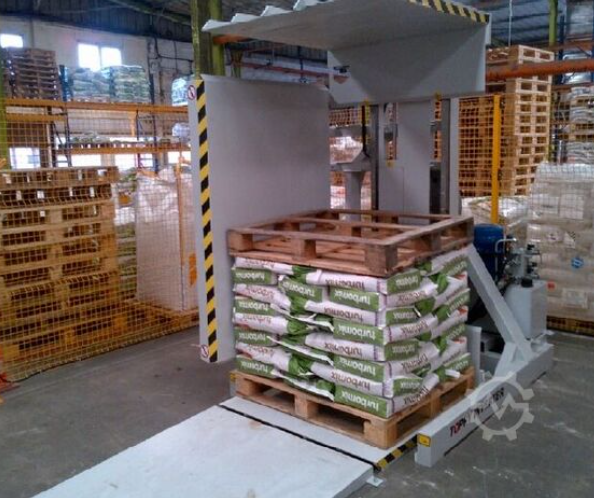
Diving Deeper: The Difference Between a Supplier and a Partner
This distinction is at the heart of my own business philosophy at SHJLPACK. I didn't achieve financial independence and help my clients grow by just selling them wrapping machines. I did it by becoming a trusted advisor, by sharing my knowledge as an engineer to help them solve their unique challenges. This is what you should demand from any equipment provider, especially for a machine that is central to your logistics flow.
Stage 1: The Pre-Sale Consultation and Custom Engineering
A supplier will show you a catalog and ask you to pick a model. A partner will start by asking questions.
- "What are the exact dimensions and weight of your heaviest loads?"
- "What is the operational environment? Is it dusty, corrosive, or temperature-controlled?" (Crucial in a steel mill!)
- "What are your throughput goals? How many pallets per hour?"
- "How will this machine integrate with your existing MES/WMS systems?"
In a steel plant, standard equipment often isn't enough. You handle heavy, dense products like steel coils or wire. You need a machine with a reinforced frame, a more powerful hydraulic system, and electrical components sealed against dust. A partner has the engineering capability to design and build a custom solution that is perfectly matched to your needs, ensuring reliability and safety. This is the kind of professional advice you are looking for.
Stage 2: Installation, Integration, and Training
A supplier might ship the machine to your door and provide a manual. A partner manages the entire installation and commissioning process. Their technicians work with your team on-site to ensure the machine is installed correctly, integrated with your safety and control systems, and running at peak performance.
Most importantly, a partner invests time in training your operators and maintenance staff. They don't just show them which buttons to press. They explain how the machine works, how to perform daily checks, and how to troubleshoot common issues. This empowers your team to own the equipment, which is critical for achieving your 95% uptime goal. An empowered team is an efficient team.
Stage 3: Long-Term Support and Future-Proofing
The world of manufacturing is not static. Your needs will change. A supplier's responsibility ends at the warranty period. A partner's responsibility lasts for the life of the machine.
- Proactive Maintenance: A partner will offer service plans that include regular inspections and remote diagnostics to support your predictive maintenance goals.
- Spare Parts: They will guarantee the availability of critical spare parts to minimize downtime.
- Upgradability: As technology evolves, a partner can help you upgrade your machine. For example, they can help you add new sensors or update the control system to communicate with a new MES platform you install in five years.
This is the essence of a strategic partnership. It's a relationship built on trust, shared expertise, and a common goal: to make your operation more successful.
| Aspect | The "Supplier" Mentality | The "Strategic Partner" Mentality |
|---|---|---|
| Initial Goal | Make a one-time sale. | Solve a long-term operational problem. |
| Solution | Offers a standard, off-the-shelf product. | Engineers a customized solution for the client's unique needs. |
| Installation | Client's responsibility. | Manages on-site installation, integration, and testing. |
| Support | Reactive; provides help when something breaks. | Proactive; offers maintenance plans, training, and long-term support. |
| Relationship | Transactional and short-term. | Collaborative and long-term. |
When I founded SHJLPACK, it was with this partnership model in mind. My mission is to be a knowledge-sharing platform, to give back the expertise that the industry gave to me. I believe that by helping you make informed, strategic decisions, we both succeed.
Conclusion
Ultimately, a pallet inverter is more than a machine. It's a strategic investment in efficiency, safety, and smart manufacturing, turning a manual bottleneck into a source of automated, data-driven advantage.





